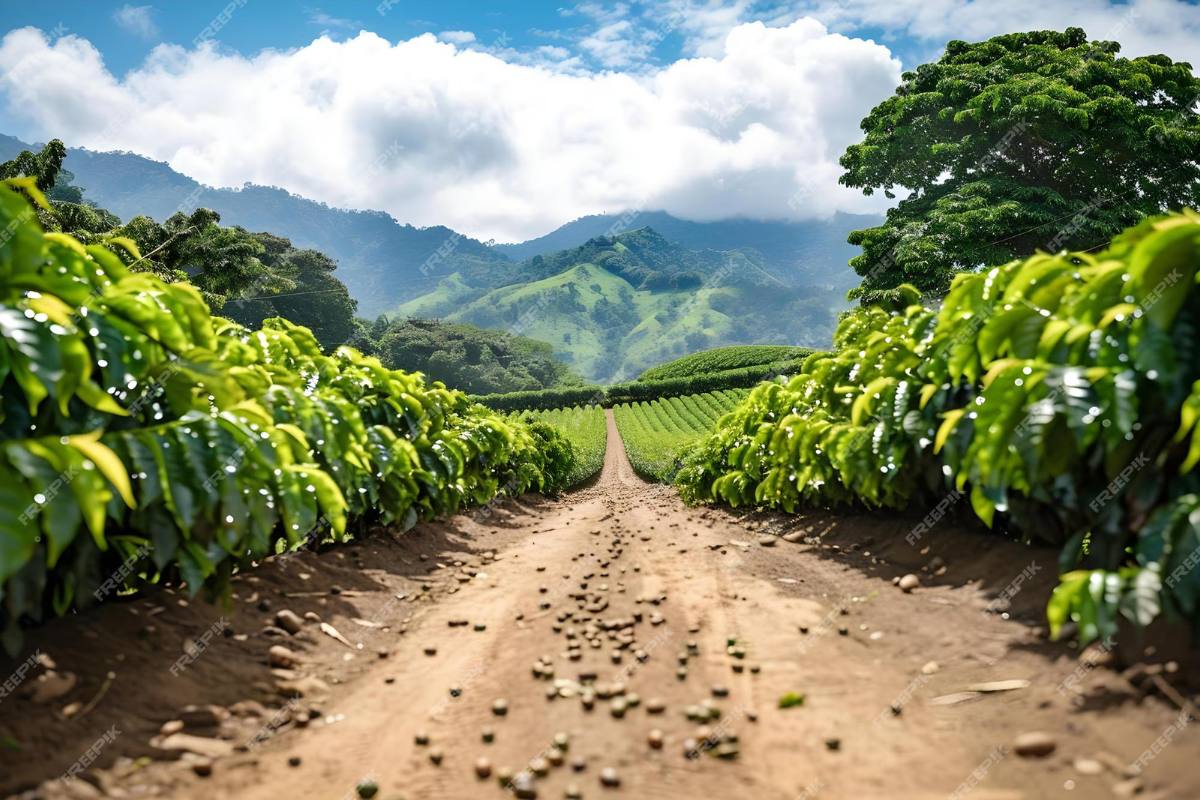When you enjoy a cup of coffee, the flavors you experience aren’t random. They are a direct reflection of the environment where the coffee was grown. Two of the most crucial elements that shape coffee flavor are soil and climate. Together, they create what is often called “terroir”, a French word used to describe the environmental factors that influence crops — from wine to coffee.
What Is Coffee Terroir?
Terroir refers to the natural environment where coffee is grown, including factors like:
- Soil composition
- Climate (temperature, rainfall, humidity)
- Altitude
- Sun exposure
These elements directly influence how coffee trees grow, how cherries develop, and ultimately, the flavor profile in your cup. Even neighboring farms can produce coffees with noticeably different flavors simply due to slight variations in soil type or microclimate.
How Soil Affects Coffee Flavor
Soil is more than just dirt — it’s a complex ecosystem filled with nutrients and minerals. The type of soil has a profound impact on coffee development.
Common Soil Types in Coffee Farming:
- Volcanic Soil: Rich in minerals like phosphorus, potassium, and nitrogen. Found in countries like Ethiopia, Guatemala, and Costa Rica, producing coffees with vibrant acidity and floral or fruity notes.
- Clay Soil: Retains water well, contributing to smooth, balanced flavors. Common in Brazilian coffee farms, particularly in regions like Minas Gerais.
- Sandy Soil: Drains quickly and can lead to lighter, sometimes brighter flavor profiles. Often seen in parts of Kenya and Ethiopia.
How Nutrients Impact Taste:
- Nitrogen: Promotes healthy plant growth, leading to sweeter beans.
- Potassium: Enhances sugar production, improving sweetness and balance.
- Phosphorus: Essential for energy transfer in plants, helping beans mature properly and develop complex flavors.
Healthy soil not only affects flavor but also plays a vital role in plant resilience against pests and climate changes.
How Climate Shapes Coffee
Climate defines how coffee trees grow throughout the year. Ideal coffee-growing climates are usually called the “Coffee Belt”, located between the Tropic of Cancer and Tropic of Capricorn.
Key Climate Factors:
- Temperature: The ideal range is 18–23°C (64–73°F). Higher temperatures can speed up ripening, reducing flavor complexity, while cooler climates slow ripening, leading to denser beans with richer flavors.
- Rainfall: Coffee requires balanced rainfall — too much causes diseases; too little stresses the plant. Annual rainfall between 1,200 to 2,000 mm is optimal.
- Dry and Wet Seasons: Distinct seasons help in proper flowering, fruit development, and harvesting.
Examples of Climate Impact:
- Ethiopia’s highlands: Cool temperatures and misty mornings produce floral, tea-like coffees.
- Colombian Andes: Consistent rainfall and cloud cover lead to sweet, balanced coffees with red fruit and caramel tones.
- Brazil’s lower elevations: Warmer temperatures create nutty, chocolate-heavy, full-bodied coffees.
Even factors like wind, altitude variations, and proximity to forests or bodies of water can subtly influence the cup profile.
Soil and Climate Working Together
It’s not just soil or just climate — it’s the interaction between them that defines coffee quality. For example:
- Volcanic soils paired with high altitudes and cool climates create coffees with high acidity, floral notes, and clarity.
- Clay-rich soils in warmer climates produce coffees that are full-bodied, smooth, and chocolatey.
This synergy explains why the same coffee variety grown in different regions can taste entirely different.
Why This Matters for Coffee Drinkers
Understanding soil and climate helps you make better choices when buying coffee. For example:
- If you enjoy bright, citrusy coffees, look for beans from high-altitude regions with volcanic soil.
- Prefer smooth, chocolate-forward coffee? Brazilian coffees from clay soils and warmer climates are ideal.
This knowledge turns every cup into a tasting adventure, helping you connect flavors to geography.
How Roasters Use This Information
Roasters often adjust their roasting profiles based on the origin’s terroir. High-altitude, dense beans require different roasting temperatures and times compared to softer, lower-elevation beans. This ensures that the unique characteristics from soil and climate are preserved in the final cup.
Coffee Is a Reflection of the Earth
Every cup of coffee is a story of its environment. The soil feeds the tree. The climate nurtures the cherries. Together, they create complex, beautiful flavors that connect you to places around the world with every sip. Next time you enjoy your coffee, remember — you’re tasting the earth, the weather, and the care of generations of farmers.
